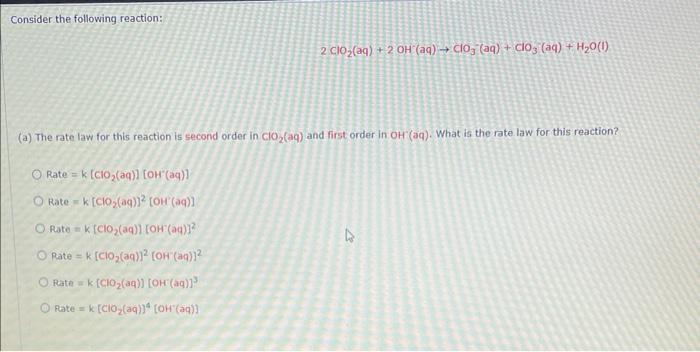Answered step by step
Verified Expert Solution
Question
1 Approved Answer
Consider the following reaction: 2ClO2(aq)+2OH(aq)ClO3(aq)+ClO3(aq)+H2O(i) (a) The rate law for this reaction is second order in ClO2 (aq) and first order in OH (aq). What


Step by Step Solution
There are 3 Steps involved in it
Step: 1

Get Instant Access to Expert-Tailored Solutions
See step-by-step solutions with expert insights and AI powered tools for academic success
Step: 2

Step: 3

Ace Your Homework with AI
Get the answers you need in no time with our AI-driven, step-by-step assistance
Get Started


